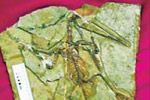Photos
Legend of silk
Updated: 2009-08-24 11:47
By Yan Fei (chinaculture.org)
 |
|
Mulberry Tree |
As is known to all silk is a unique invention of China. For a long period of time, China was the only country in the world which produced and used silk.
Among the myths and legends of Chinese history, Lei Zu, a Concubine of the Chinese ancient Emperor Xuanyuan, is recognized as the ancestor of sericulture and silk spinning.
There is a beautiful story telling how Lei Zu was drinking in a wild mulberry bush when some wild cocoons fell in her bowl. When she tried to fish out the cocoons, she found it stretched in a never-ending line. Then she began to rear wild silkworms and spun to knit. Afterwards, she was worshipped as “Goddess of Silkworms” by Chinese people.
Even today, there is an old tradition kept in Huzhou city of Zhejiang Province that Lei Zu is worshiped every Qingming Festival (around April 5th every year) for her contribution for bringing silk into people’s life.
Chinese silk is not only famous for its exquisite design, but also for its lightness and thinness.
There is an interesting story in Sulayman’s Journey to the East.
An Arabian merchant visited an official of Tang Dynasty(AD 618-907), he found a black mole in the official’s chest. He could hardly believe it, so he stared at his chest for quite a while. Until the official asked that he thought there was something wrong with his eyes, because he could see the mole under two layers of clothing! He told his doubt to the official and the official burst into a great laughter. After being showed the silk costume, the merchant finally realized how thin the silk was and became crazy about this amazing textile.
Silk History in China
According to some archaeological data, the exact time that silk was put into practical use is earlier than Lei Zu’s era of 4,600 years ago.
In 1958, some silk products of 4,700 years ago were excavated in Yuhang City of Zhejiang Province, including silkfadeno, ribbons, silk ropes and some silk pieces. Although these objects had been carbonized, the clear identification of latitude and longitude of silk is a powerful proof of the master handicraft of that time.
Till the Han dynasty (206 BC- AD 220),the handicraft of silk spinning has been improved to such a high level that every silk thread was composed of 14-15 silk fibers, which can be found from the brocade excavated in Mawangdui Tombs of Western Han Dynasty (206 BC-AD24) in Hunan Province. With the improvement of silk spinning handicraft, the finished silk products were more powerful to convey kind of poetic imagery.
All in all, in the rich cultural heritage, the unique style of silk texture has gradually become a symbol of Oriental aesthetic spirit. In other words, it is because silk that the Chinese costume shows kind of ethereal beauty and elegance; it is because of silk that the figure in Chinese painting shows a life-like image of verisimilitude.
Silk going abroad
 |
|
Painting of Zhang Qian's Journey to the West |
When talking about the silk going abroad, one has to mention the world-renowned Silk Road. During the long historical process, it’s the Silk Road that connects China and the countries of Central and Western Asia, which led to wonderful cultural exchange and expanding of silk spinning handicraft.
Since the 5th Century BC, China has exported silk to Western countries. Because of the exquisite handicraft and beautiful design, Chinese silk was commended as the “creature from heaven”. At that time, Greeks and Romans called China “Serica” and Chinese people “Seris”, both of which were derived from the name of silk——“Serge”.
It is noted in a Western historical book that, once the Roman Emperor Julius Caesar went to theatre with a silk robe, he successfully distracted all the people’s attention from the show to his gorgeous costume.
In the 4th Century BC, Chinese silk was introduced into India. Around the 2nd Century BC, there was even an interesting article in the Indian Manu Code that the silk stealer was only allowed to drink milk and eating nothing during three days as a punishment, which obviously proved the high value and scarceness of silk at that time.
Specials

President Hu visits the US
President Hu Jintao is on a state visit to the US from Jan 18 to 21.

Ancient life
The discovery of the fossile of a female pterosaur nicknamed as Mrs T and her un-laid egg are shedding new light on ancient mysteries.

Economic Figures
China's GDP growth jumped 10.3 percent year-on-year in 2010, boosted by a faster-than-expected 9.8 percent expansion in the fourth quarter.
